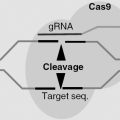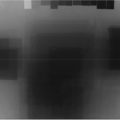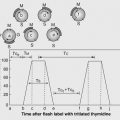21
RADIATION PROTECTION
TAORAN CUI AND PENG QI
Question 1
In the United States, which agency provides guidelines for radiation protection?
Question 3
What is the major difference between the deterministic effects and stochastic effects?
Question 1 In the United States, which agency provides guidelines for radiation protection?
Answer 1
The National Council for Radiation Protection and Measurements (NCRP) provides recommendations for radiation protection. The NCRP recommendations are directly related to the Biological Effects of Ionizing Radiation (BEIR) reports, of which the latest is BEIR VII report of 2006.
National Council on Radiation Protection and Measurements. Risk Estimates for Radiation Protection. NCRP Report No. 115; Bethesda: MD; 1993.
Question 3 What is the major difference between the deterministic effects and stochastic effects?
Answer 3
Deterministic effect has a threshold of dose and the severity is dose dependent, whereas stochastic effect does not have a dose threshold and is not dose dependent. Examples of deterministic effects are skin erythema, hair loss, and cataracts. Stochastic effects include radiation carcinogenesis and hereditary effects.
Cember H, Johnson TE. Radiation safety guides. In: Cember H, Johnson TE, eds. Introduction to Health Physics. 4th ed. New York, NY: McGraw-Hill; 2009:344–347.
Question 5
What is equivalent dose?
Question 7
What is effective dose?
Question 5 What is equivalent dose?
Answer 5
Equivalent dose (HT) is defined as the radiation-weighted sum of the absorbed dose in a tissue or organ (DT,R), given by the expression:
![]()
where wR is the radiation weighting factor. The unit of equivalent dose is given the special name Sievert (Sv), and 1 Sv is equal to 1 J/kg.
Hall EJ, Giaccia AJ. Radiation protection. In: Hall EJ, Giaccia AJ, eds. Radiobiology for the Radiologist. 7th ed. Philadelphia, PA: Lippincott Williams & Wilkins; 2006:224–239.
Question 7 What is effective dose?
Answer 7
Effective dose (E) is the sum of all the weighted (wT) equivalent doses in all the organs or tissues irradiated, given by:
![]()
The calculation of this quantity takes into account the sensitivity to radiation of different organs or tissues. The standard international (SI) unit of effective dose is the same as equivalent dose (unit: Sv). Both equivalent dose and effective dose are used to indicate the stochastic effects of ionizing radiation on the human body.
Hall EJ, Giaccia AJ. Radiation protection. In: Hall EJ, Giaccia AJ, eds. Radiobiology for the Radiologist. 7th ed. Philadelphia, PA: Lippincott Williams & Wilkins. 2006:224–239.
Question 8
What are the latest tissue weighting factors (wT) recommended by the International Commission of Radiological Protection (ICRP)?
Question 10
What are the assumptions, simplifications, and approximations included in the definition of effective dose?
Question 8 What are the latest tissue weighting factors (wT) recommended by the International Commission of Radiological Protection (ICRP)?
Answer 8
Tissue | wT | ∑wT |
Bone-marrow (red), colon, lung, stomach, breast | 0.12 | 0.72 |
Gonads | 0.08 | 0.08 |
Bladder, esophagus, liver, thyroid | 0.04 | 0.16 |
Bone surface, brain, salivary glands, skin | 0.01 | 0.04 |
|
| 1 |
Valentin J. The 2007 recommendations of the International Commission on Radiological Protection: Publication 103. Ann. ICRP 2010;37(2–4):1–332
Stay updated, free articles. Join our Telegram channel

Full access? Get Clinical Tree






